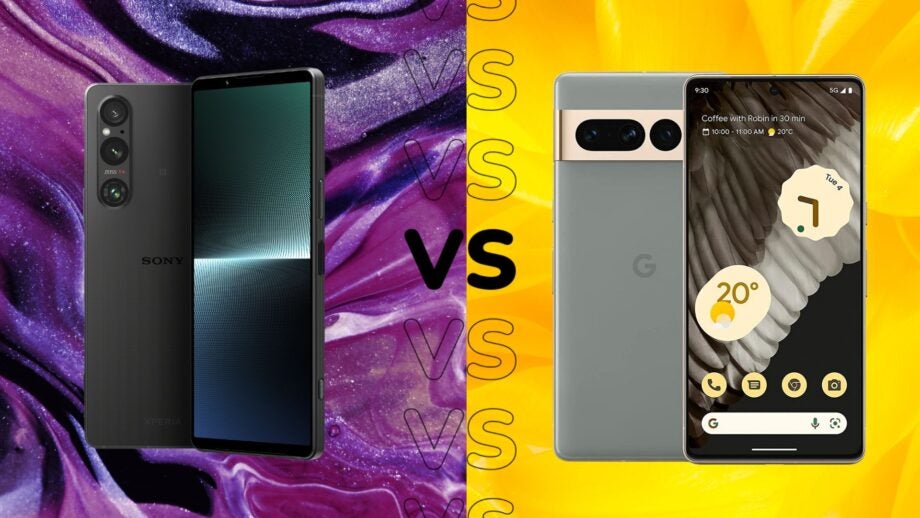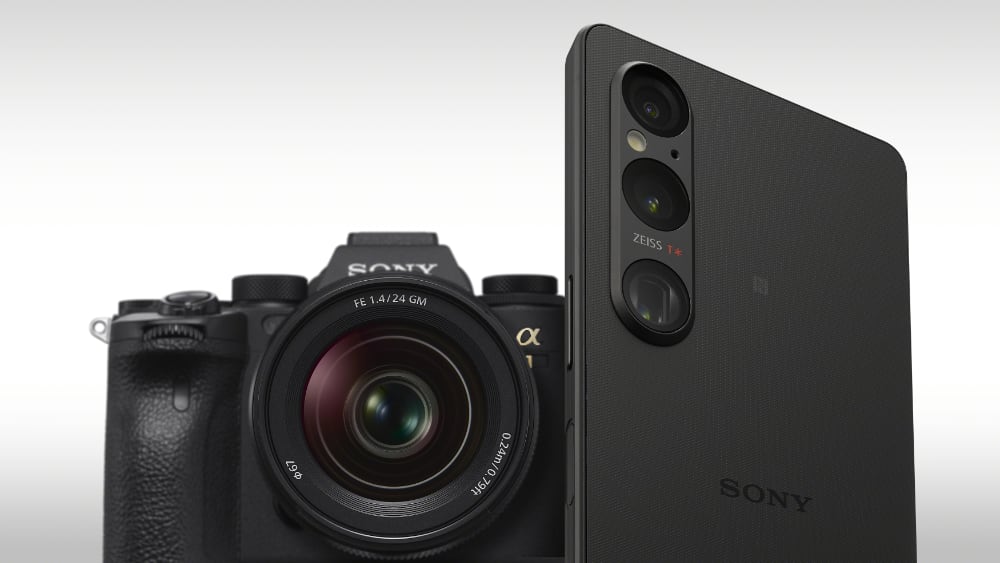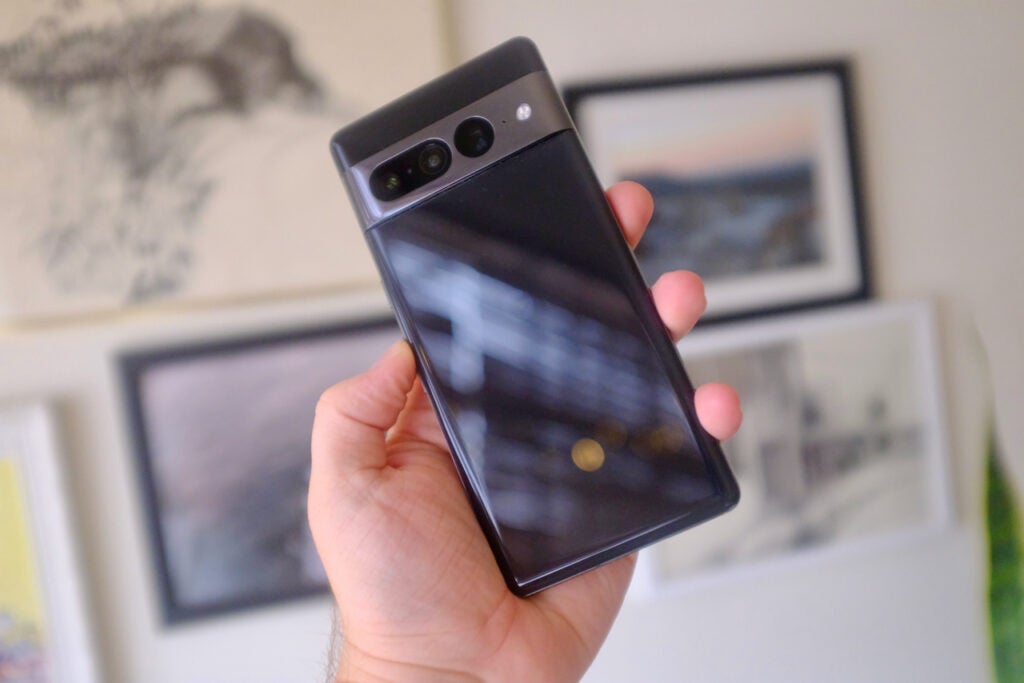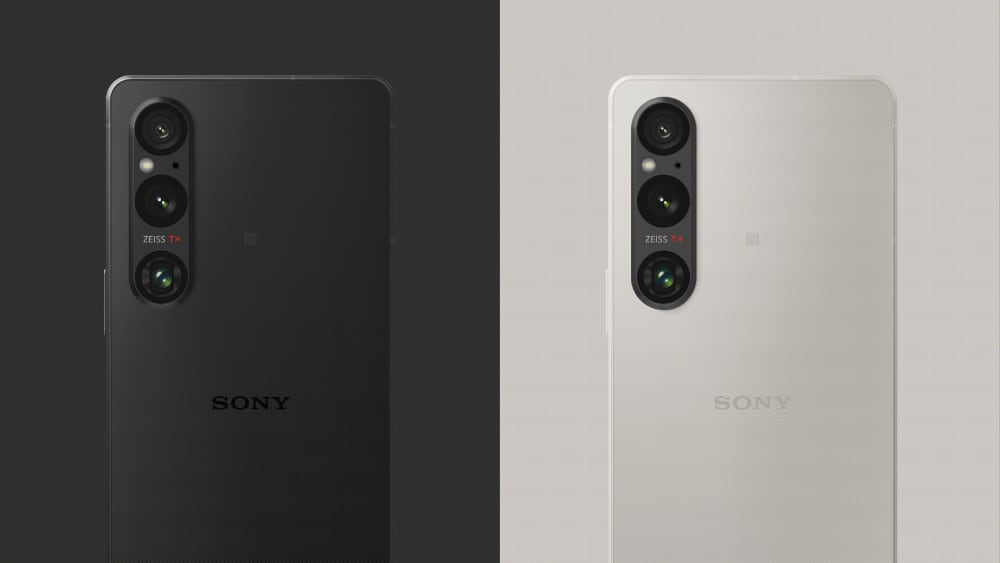Sony Xperia 1 V vs Google Pixel 7 Pro: Which should you buy?

Sony’s new top-end Xperia 1 V boasts key camera improvements that the company claims deliver huge gains in low-light photography, but how does it compare to one of the most capable camera phones around, the Google Pixel 7 Pro?
The two may be at the top of their game in terms of camera prowess, but there are key differences between the two in other departments that might sway your vote one way or the other, be it Google’s focus on AI tech or Sony’s high-resolution display.
Here are five key differences between the Sony Xperia 1 V and the Google Pixel 7 Pro. We compare the Sony Xperia 1 V and the Xperia 1 IV separately if you’re curious as to what’s new with this year’s model.
Snapdragon vs Tensor
Let’s get the most obvious difference out of the way first; the Sony Xperia 1 V sports Qualcomm’s top-end Snapdragon 8 Gen 2 chipset – the same as you’ll find in other 2023 flagships like the Xiaomi 13 Pro and OnePlus 11, paired with 12GB of RAM and either 256GB or 512GB of storage.
While we’ve yet to benchmark the Xperia 1 V, we’re confident of its performance based on other Snapdragon Gen 2-equipped smartphones – as long as Sony has solved the overheating issue that plagued the Xperia 1 IV from last year, that is.
The Google Pixel 7 Pro, on the other hand, features the same in-house-developed Tensor G2 chipset as the Pixel Fold, Pixel Tablet and even the mid-range Pixel 7a, coupled with 8- or 12GB of RAM and either 128-, 256- or 512GB of storage.
We found that while the Pixel 7 Pro is able to handle daily tasks with ease, it’s not quite as powerful as even the Snapdragon 8 Plus Gen 1 let alone its newer, more powerful sibling, so expect the Xperia 1 V to score better in benchmark tests.
But while it might not be a benchmark-topper, the Tensor G2 chipset is focused on AI and machine learning that allows the Pixel phones to perform some pretty unique tasks like automatically navigating those annoying call menus, transcribing in real-time with impressive accuracy and performing complex photo edits with ease – but more on that later.
The Sony Xperia 1 V has a more advanced camera setup
With Sony boasting an entire DSLR division, it should come as no surprise that Sony’s Xperia 1 V has impressive camera capabilities including a unique main sensor and a capable telephoto lens.

The new 52MP Exmor T chipset has a unique two-layer transistor within the CMOS that Sony claims helps deliver huge gains in low-light photography with a 2x boost compared to the Xperia 1 IV – though how that compares to the main sensor in real-world tests is yet to be determined.
The Xperia 1 V also has the larger camera sensor of the two at 1/1.31in, which should further improve low-light performance.
That’s flanked by a 12MP ultrawide and 12MP telephoto, with the latter offering a continuous optical zoom between 3.5 – 5.2x for truly versatile close-ups.
That doesn’t mean the Pixel 7 Pro doesn’t offer a great camera combination, however, with a main 50MP snapper with identical f/1.9 aperture, though with a slightly smaller 1/1.31in sensor. That’s paired with a high-res 48MP fixed 5x telephoto lens and a 12MP ultrawide. And, with Google, there’s more to photography than hardware – but more on that in a sec.
The Google Pixel 7 Pro has better AI imaging tech
While the Xperia 1 V may have more capable cameras in terms of hardware, it can’t quite compete when it comes to AI processing and the magic that the Pixel 7 Pro can do with its AI-focused Tensor chipset that makes the Pixel 7 Pro one of the best camera phones around.
That means that, while the telephoto lens caps out at 5x, Google uses its Super Res Zoom to offer 30x zoom with impressive results. It’s a similar story with Real Tone, Google’s industry-leading skin tone tech and Night Sight, the company’s night mode.

It allows even budget-focused models like the Pixel 7a to outperform the likes of the iPhone 14 Pro Max in real-world scenarios, though we’d be interested to see how the Xperia 1 V compares given its unique main sensor.
It’s not just while you’re capturing either; the Pixel 7 Pro offers AI-powered editing tools like Magic Eraser to remove unwanted elements in photos and Face Unblur to unblur the face of moving subjects.
The Sony Xperia 1 V has a higher-res display
The Sony Xperia 1 V, like its flagship predecessors, is one of very few smartphones on the market to offer a 4K resolution (1644 x 3840).
While some might argue that it’s much of a muchness on a relatively small 6.5-inch OLED panel (compared to TVs, that is), it does allow you to enjoy 4K content from the likes of Netflix and YouTube without any kind of downscaling. It also provides a pixel-packed density of 641ppi, one of the highest of any smartphone around in 2023.
It’s also smooth at 120Hz, though lacks the LTPO tech that allows the display to drop down to as little as 1Hz to save battery life – something the Pixel 7 Pro does offer.
In fact, the Pixel 7 Pro isn’t far behind the Xperia 1 V’s resolution at 1440 x 3120. However, the combination of fewer pixels and a larger 6.7-inch 120Hz AMOLED panel means its pixel density is less at 512ppi – though still impressive for most users.

The Xperia 1 V is much more expensive than the Pixel 7 Pro
Despite the similarities between the two, the Google Pixel 7 Pro is much more affordable at £849/$899. That may still be relatively pricey, but it represents great value for money compared to the ultra-premium Sony Xperia 1 V and its £1,299/$1,399 starting price. That’s an increase of £450/$500.
If you’re tempted, you can pick up the Google Pixel 7 Pro now, while fans of the Sony Xperia 1 V have a bit of a wait on their hands. You’ll be able to pre-order from 14 June in the UK ahead of a 29 June launch, while those in the US can pre-order now ahead of a release on 28 July, almost a month later. Which will you go for? Let us know on Twitter.


